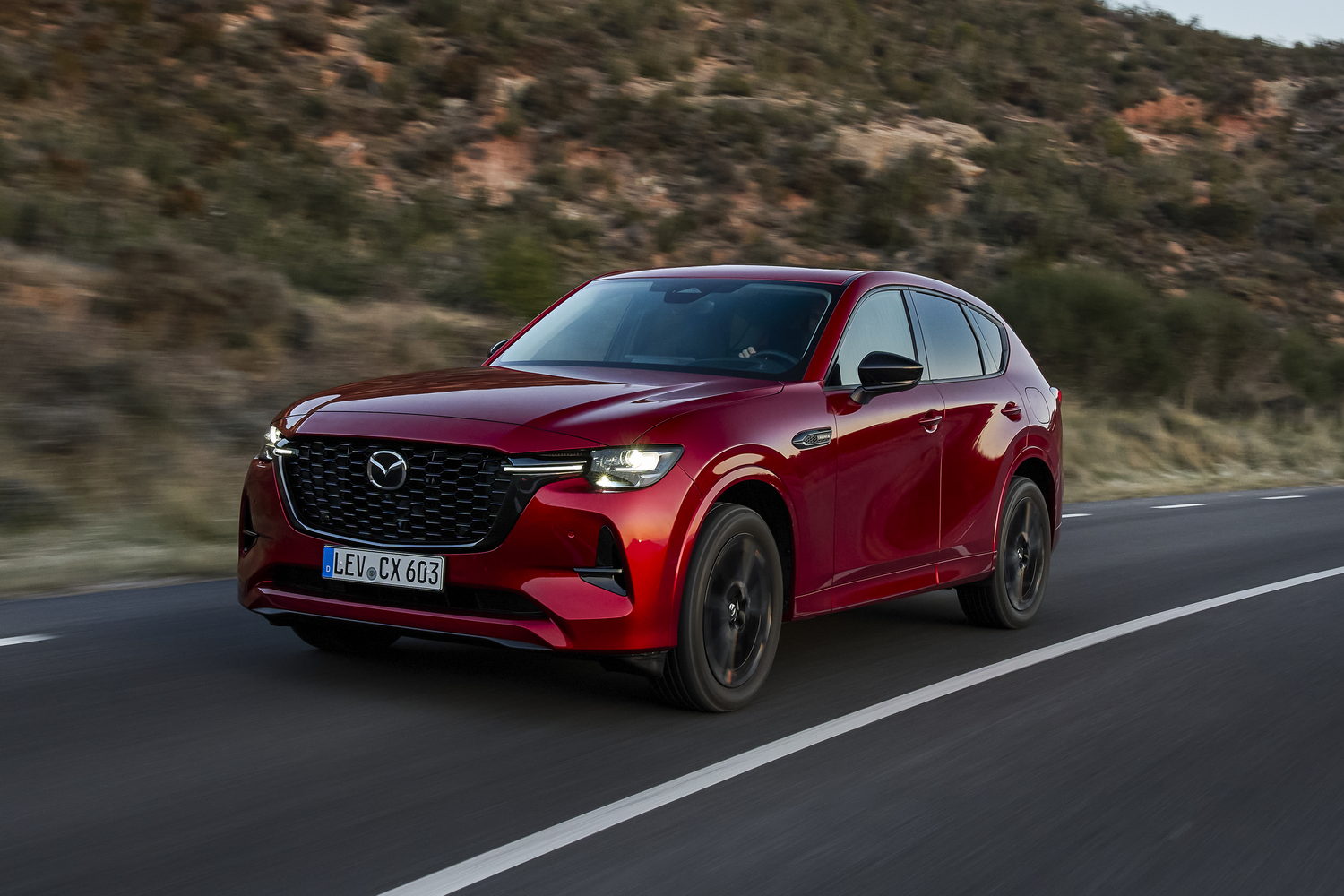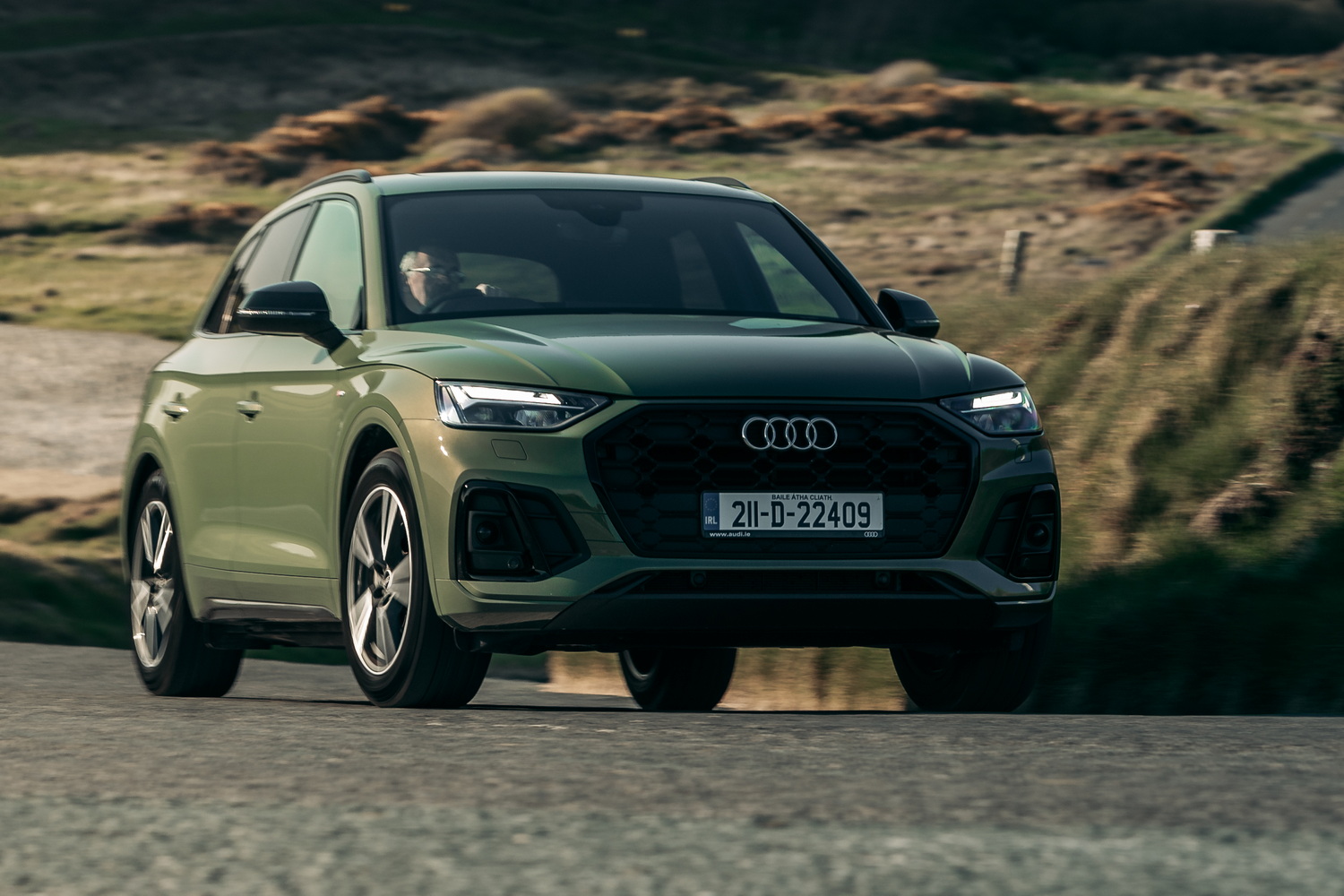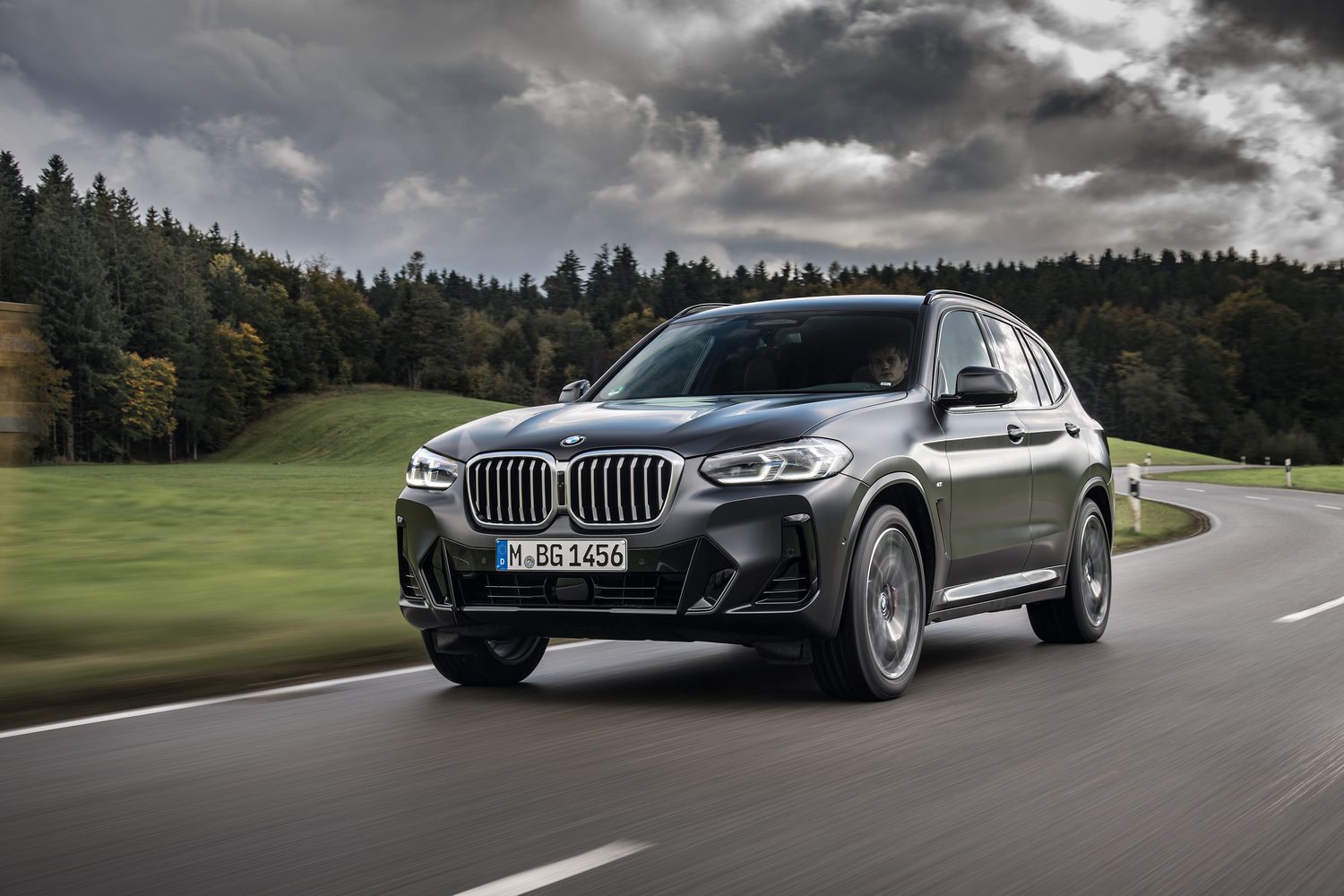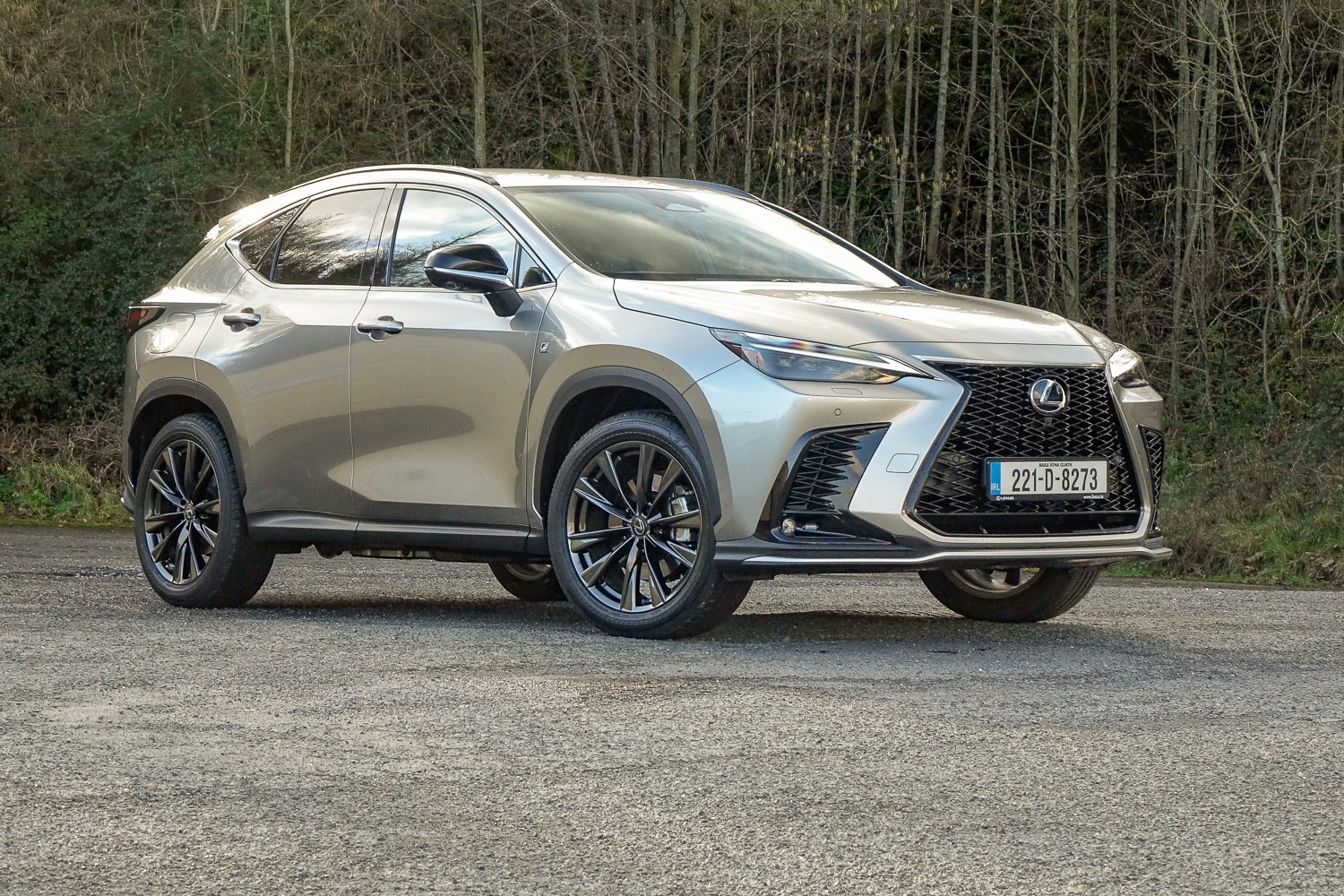As one of the automotive industry's long-standing outliers, Mazda is once again bucking current trends by developing a new, large-capacity six-cylinder diesel engine for its flagship CX-60 SUV, albeit one using mild-hybrid technology to enhance efficiency. So, after a disappointing debut in plug-in hybrid guise, can the Mazda CX-60 redeem itself with a new diesel engine?
In the metal
In general, Mazda's designers have been doing a good job of late, though we're not convinced by the CX-60's style. It's still clearly from the same company, but its height and lack of substantial ground clearance leave it looking a bit slab-sided. The car's specification, therefore, has a big impact on the end result. In the Homura equipment grade with Soul Red Crystal paint (a €1,150 option) and the 20-inch black alloy wheels, black grille and door mirrors the CX-60 has a more appealing and sportier image.
To give the CX-60 a premium feel, it has a longer bonnet (though that's also partly to help accommodate the new inline six-cylinder engine) and a cab-rearward design that is obvious when viewing the car from the side. The CX-60 is also obviously larger than the Mazda CX-5, at 170mm longer and 45mm wider.
Some may doubt Mazda's ambition to move into the premium sector, but the build quality and appearance of the CX-60's cabin should allay those doubts. Its layout is somewhat conventional and sensible, with plenty of physical buttons for the things you'll want to adjust more frequently. The infotainment system is simple to use, and Mazda offers Android and Apple connectivity, too. In the Homura grade, black leather upholstery features across the dashboard, while the metallic inlays and door inserts look and feel made to a high standard. Indeed, everything inside has a solid, robust feel that comfortably matches what you would find in a BMW or Audi.
Despite its size, the CX-60 is a five-seater, though Mazda will launch a seven-seat model called the CX-80 later in 2023. Rear passenger space is good, though the front seat rails slightly impinge on foot space. The middle seat lacks the same comfort as the two outer seats, but an adult can still fit in. There is also a generously-sized boot that can hold up to 570 litres. That increases to 1,726 litres when the rear seats are folded down.
Driving it
One of the most intriguing aspects of this CX-60 is the powertrain that Mazda has developed for it. Designing and engineering a brand new 3.3-litre six-cylinder diesel engine for launch in 2023 seems like a bizarre move given the huge changes ongoing in the car industry to switch towards electrification. Mazda has been resolute in its opinion that combustion engines, in conjunction with e-fuels, still have a part to play in the future and it's putting its money where its mouth is with this particular setup.
As we roll away on our initial drive, the unmistakable sound from the six-cylinder diesel is reminiscent of a heavy locomotive though similar to some of BMW's engines, too. The boomy rumble reminds you of this motor's torque - up to 550Nm - and you feel that as you press the accelerator. From 2,000rpm, the sizeable Mazda surges forward with that typical diesel grunt as its eight-speed automatic transmission shuffles up through its gears.
More surprising is how vocal the engine is when under load, and even when cruising there's a constant background rumble. Occasional pauses in combustion come as the 48-volt mild-hybrid system allows the CX-60 to coast for short periods, relying on a compact battery to keep its ancillary systems running. However, it doesn't happen with much frequency, and the engine restart could do with further refinement.
This setup, combined with an innovative combustion design that Mazda calls DCPCI (Distribution-Controlled Partially Premixed Compression Ignition), optimises engine efficiency. Drivers aren't likely to notice any different characteristics in how the engine performs and, in our time with the car, it indicated a consumption of 5.8 litres/100 kilometres over a variety of different driving conditions.
There is a noticeable handling difference between this diesel version and the plug-in hybrid model we drove in late 2022, though. One of the primary reasons is the diesel's lower weight, as even with its mild-hybrid hardware, it weighs around 140kg less. Through bends and faster corners, the Mazda feels more sure of itself and less like it's fighting against its weight.
There isn't the same degree of positive feedback through the steering wheel as you would get from a BMW, and the brake pedal is somewhat lacking in feedback, seeming to always be too stiff for any progressive feel, through these things are unlikely to dissuade buyers.
What you get for your money
Pricing for the Mazda CX-60 e-Skyactiv D in Ireland is still in the process of being confirmed, though we understand that it will cost more than the plug-in hybrid variant. That has a starting price of €54,100, rising to €60,950. Part of that is down to Mazda Ireland only planning to offer the more powerful diesel version, which also includes all-wheel drive. This powertrain will be available with the same four specification grades currently available for the plug-in hybrid model.
Summary
After a lacklustre outing with its plug-in hybrid debut, Mazda has redeemed the CX-60 somewhat with this new diesel engine. Yes, the mild-hybrid tech feels more like a token gesture, but the fuel consumption figure over a longer run seems respectable enough for such an engine. Just as importantly, the CX-60 is more enjoyable to drive in this guise, and in its higher trim grades it now feel like an alternative to the established premium offerings. Whether the Japanese brand's gamble on combustion engines hanging around long enough to claw back its investment pays off remains to be seen, but some buyers will be glad there's a diesel option to choose from.




























